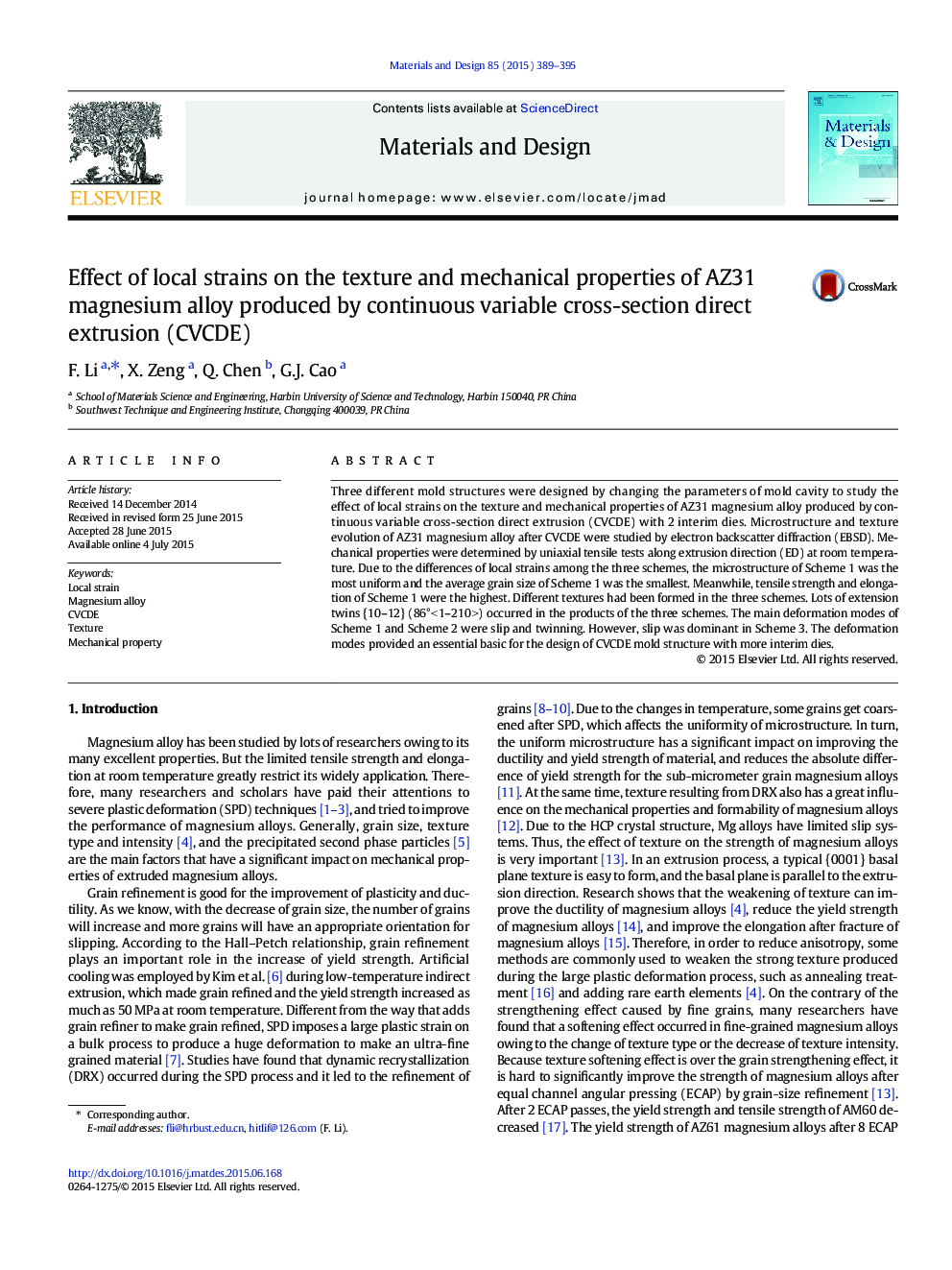| Article ID | Journal | Published Year | Pages | File Type |
|---|---|---|---|---|
| 828309 | Materials & Design | 2015 | 7 Pages |
•Based on the change of mold cavity structures, three schemes of different local strains are designed.•Among the three schemes, mechanical properties of Scheme 1 are the best.•Due to the different local strains, textures of different schemes are different.•Twins play an important role in Scheme 1 and Scheme 2, while slipping is dominant in Scheme 3.
Three different mold structures were designed by changing the parameters of mold cavity to study the effect of local strains on the texture and mechanical properties of AZ31 magnesium alloy produced by continuous variable cross-section direct extrusion (CVCDE) with 2 interim dies. Microstructure and texture evolution of AZ31 magnesium alloy after CVCDE were studied by electron backscatter diffraction (EBSD). Mechanical properties were determined by uniaxial tensile tests along extrusion direction (ED) at room temperature. Due to the differences of local strains among the three schemes, the microstructure of Scheme 1 was the most uniform and the average grain size of Scheme 1 was the smallest. Meanwhile, tensile strength and elongation of Scheme 1 were the highest. Different textures had been formed in the three schemes. Lots of extension twins {10–12} (86°< 1–210 >) occurred in the products of the three schemes. The main deformation modes of Scheme 1 and Scheme 2 were slip and twinning. However, slip was dominant in Scheme 3. The deformation modes provided an essential basic for the design of CVCDE mold structure with more interim dies.
Graphical abstractFigure optionsDownload full-size imageDownload as PowerPoint slide
